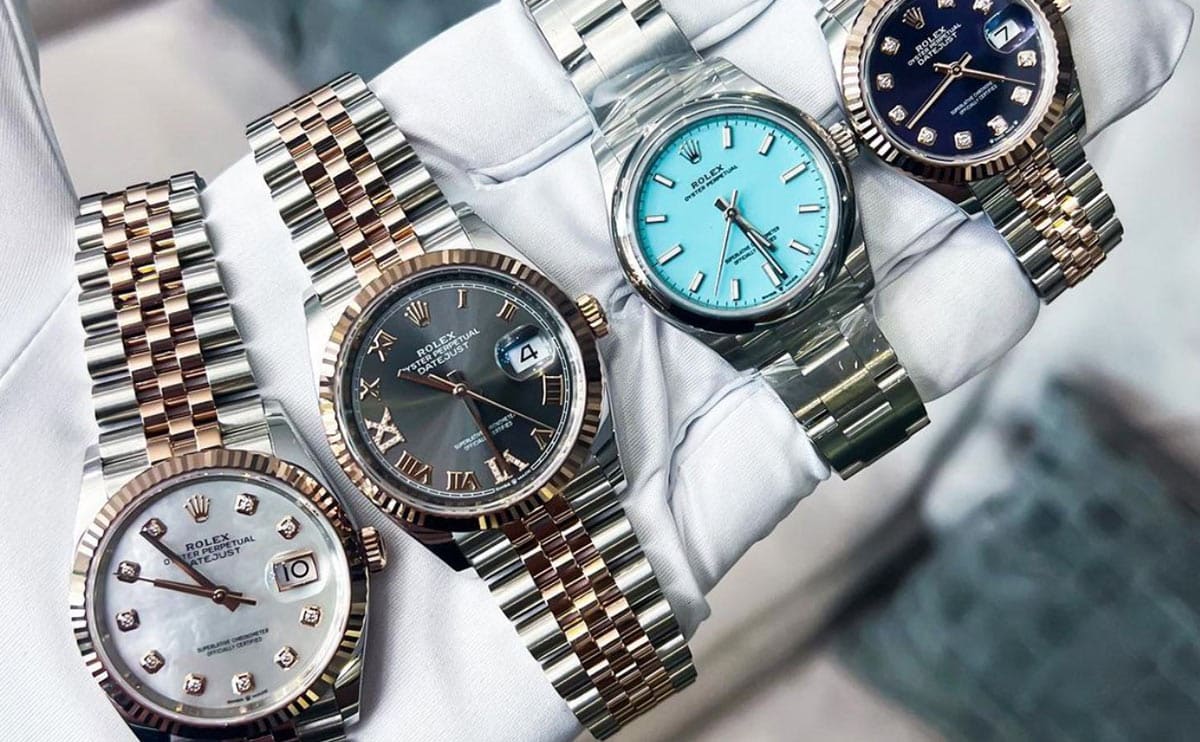There are parts of a watch that have a strong influence on its appearance as well as its functionality. Typically, the watch bezel is only made for aesthetic purposes, to blend in with the rest of the watch’s design and add to it. A bezel, however, can add functions to a watch that make it more practical on “professional” or “tool watches.”
Rolex employs both types of bezels, depending on the model and its intended use. Rolex has used a variety of bezel types and designs over the years, some of which are still in production and in use today, while others are part of Rolex’s history and past.
We’ve compiled all of the Rolex bezel types that Rolex has used – or is still using – in this article. This includes bezels that are either functional or purely decorative.
Rolex Fluted Bezel
The fluted bezel is one of the most recognizable bezel styles in the world, and certainly one of Rolex’s most recognizable bezels. The fluted bezel is now solely for aesthetic purposes, but this was not always the case.
Originally, the bezel was a key component in making the Oyster case waterproof, which was accomplished by screwing the bezel, case back, and winding crown against the middle case. Rolex designed the bezel with flutings so that it could be screwed down against the case with its specially developed tool.
Rolex watches are enhanced by the fluted bezel, which gives them a more luxurious and exclusive appearance. The bezel catches light from different angles thanks to the fluting, creating a stunning light show. The fluted bezel is now only available in gold.
It can be found in the Datejust, Sky-Dweller, Day-Date, Oyster Perpetual, and Air-King watch collections.
Rolex Tachymeter Bezel
Unlike the fluted bezel, the Tachymeter bezel has always served a functional purpose and will continue to do so. Because the Daytona is Rolex’s only chronograph, the tachymeter bezel is used exclusively on it.
The bezel’s tachymeter scale allows the wearer to calculate the average speed over a specified distance using elapsed time. It can measure speeds in kilometers or miles up to 400 units per hour. The center chronograph hand is activated by pressing the pusher on the Tachymeter bezel. When a car, for example, has driven the specified distance, the chronograph pusher is stopped, and the bezel displays the car’s average speed.
Rolex Domed Bezel
The domed bezel, also known as a smooth bezel, is very simple, sleek, and straightforward. It’s just a polished piece of metal with no fuzz or embellishments. With this in mind, some people prefer this bezel design because it shifts the focus away from the bezel and toward the dial, resulting in a watch that is overall sleek and clean.
This bezel has the advantage of being very versatile because it does not stand out too much. This bezel style is still used by Rolex today and can be found in a variety of collections. The Air-King, Milgauss, Datejust, Day-Date, Date, Explorer, and Oyster Perpetual are all examples of this.
Rolex GMT Bezel
The Rolex GMT bezel has been made out of three different materials over the years, and it is still in use today. Rolex created the first GMT watch in 1954 in response to a request from Panam, which required a watch that could keep track of two time zones at the same time. The GMT-Master, which was the first GMT wristwatch ever released, was Rolex’s response to this request.
Rolex Dive Bezel
In 19544, Rolex introduced the Submariner, its first watch designed specifically for diving. The 60-minute graduations on the Submariner allow the wearer to keep track of elapsed time while diving. A diver’s ability to keep track of the elapsed time is critical because it allows them to determine how much oxygen is left in the tank. A dive can be deadly without a diver’s bezel.
The Submariner bezel was originally made of aluminum, but due to the material’s durability, Rolex switched to ceramic, just like the GMT-Master. Today’s dive watches are unidirectional, but they weren’t always. The problem with this is that if a diver accidentally hits the bezel, the watch may show that they have been in the water for less time than they have, putting them at risk of running out of oxygen.
The dive bezel is used on all Rolex dive watches, including the Sea-Dweller, Deepsea Sea-Dweller, and Submariner. A similar dive bezel is used on the Yacht-Master, but it is bidirectional because Yachters do not go on dangerous deep dives.


